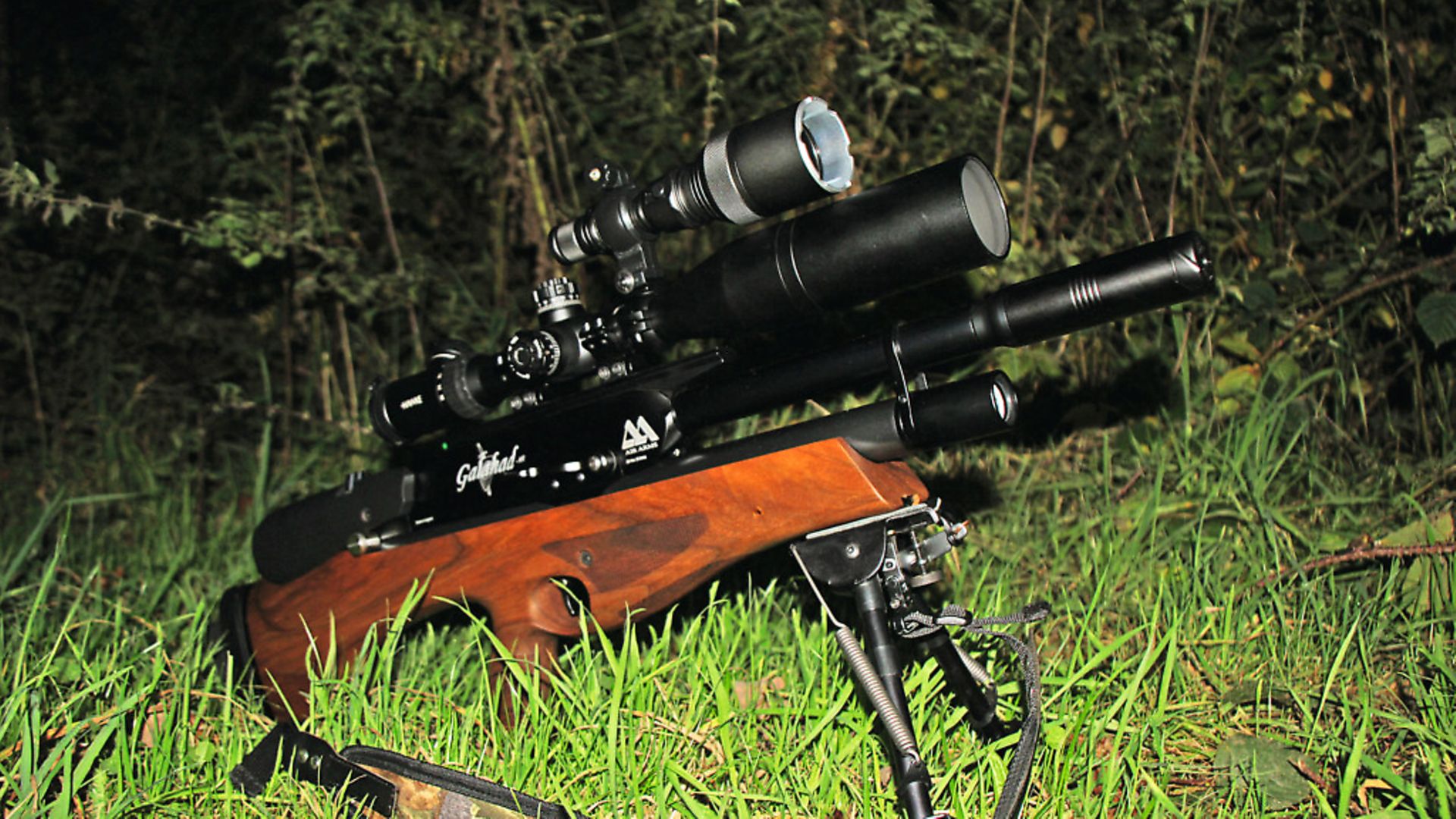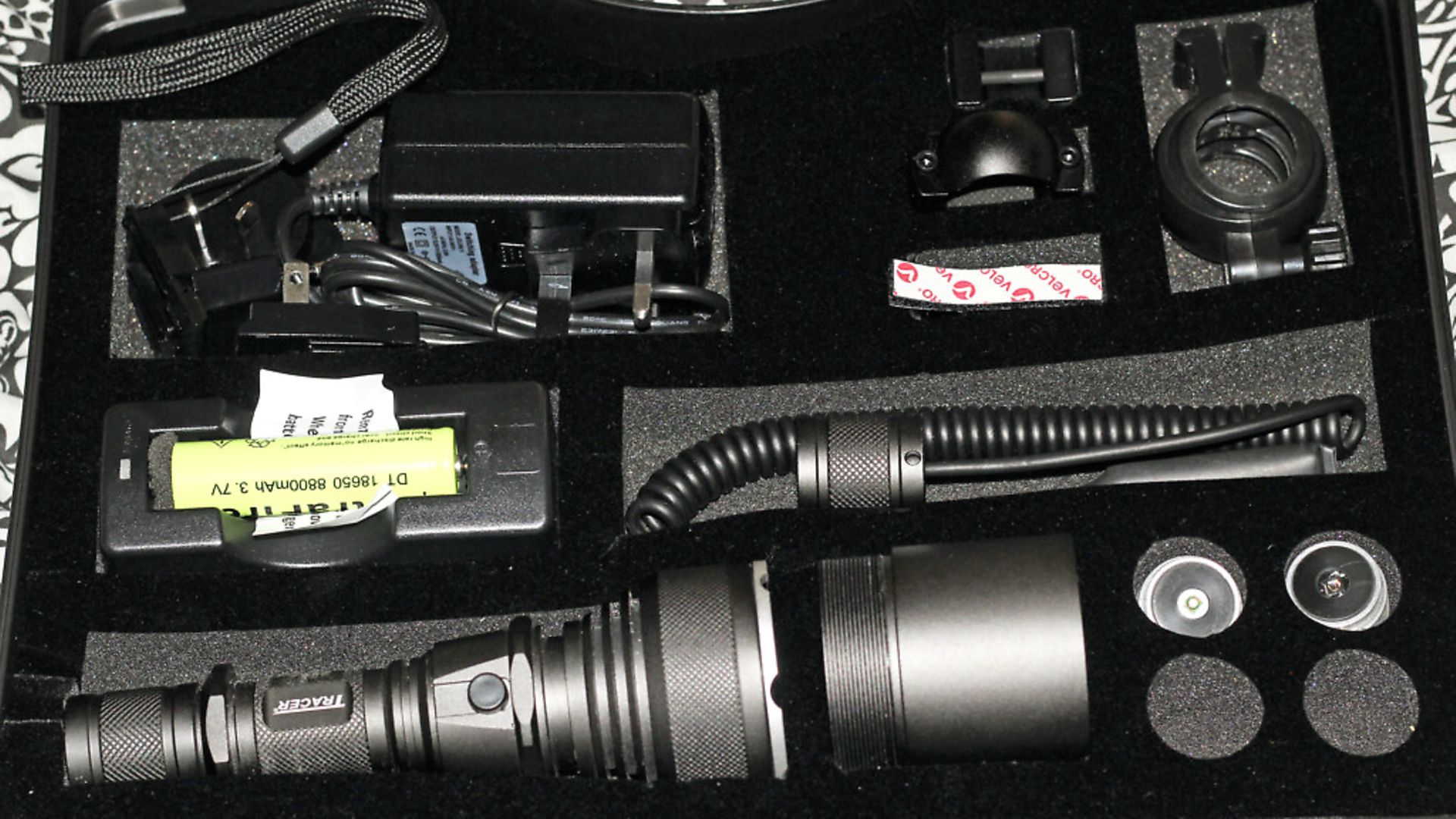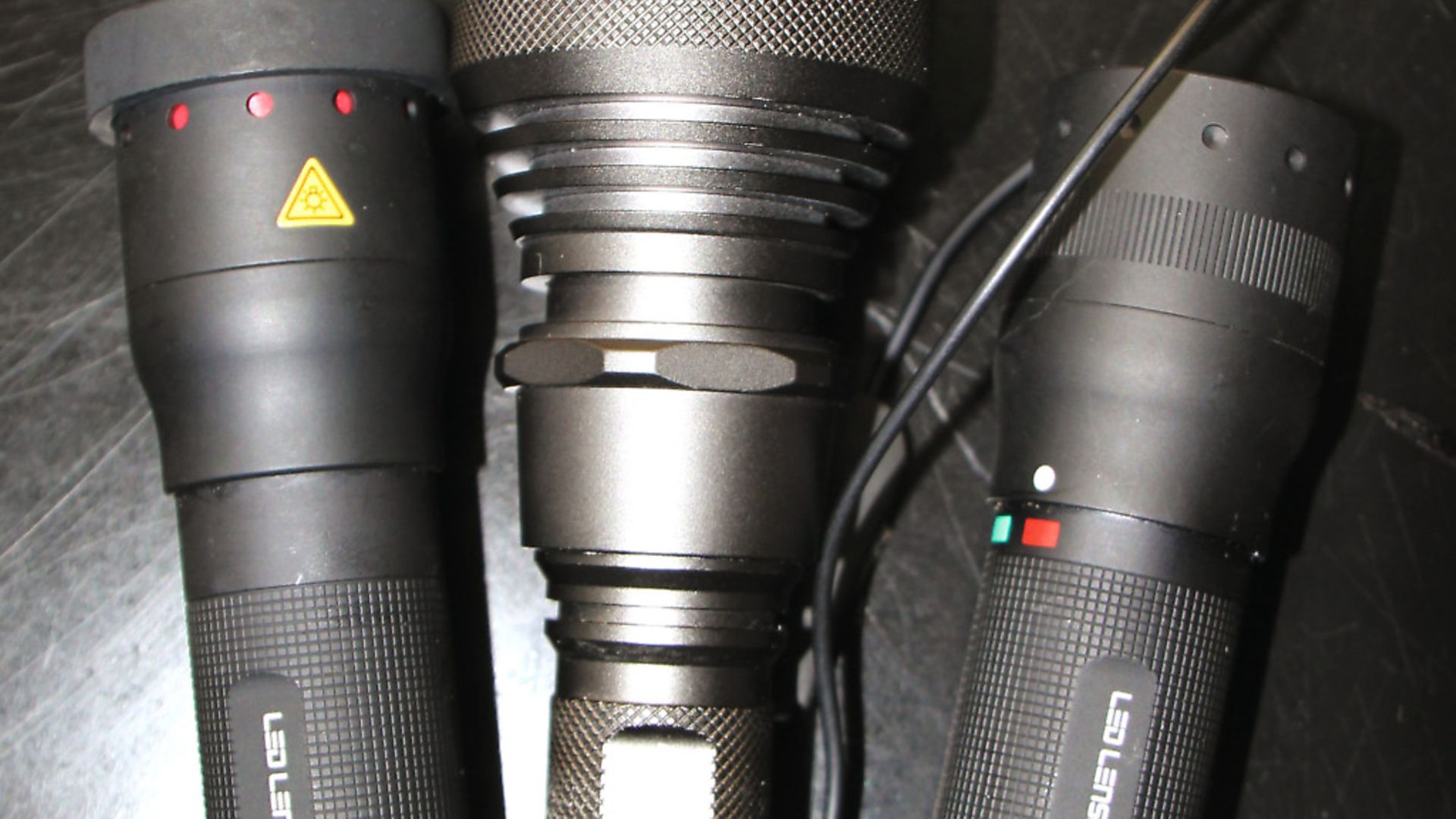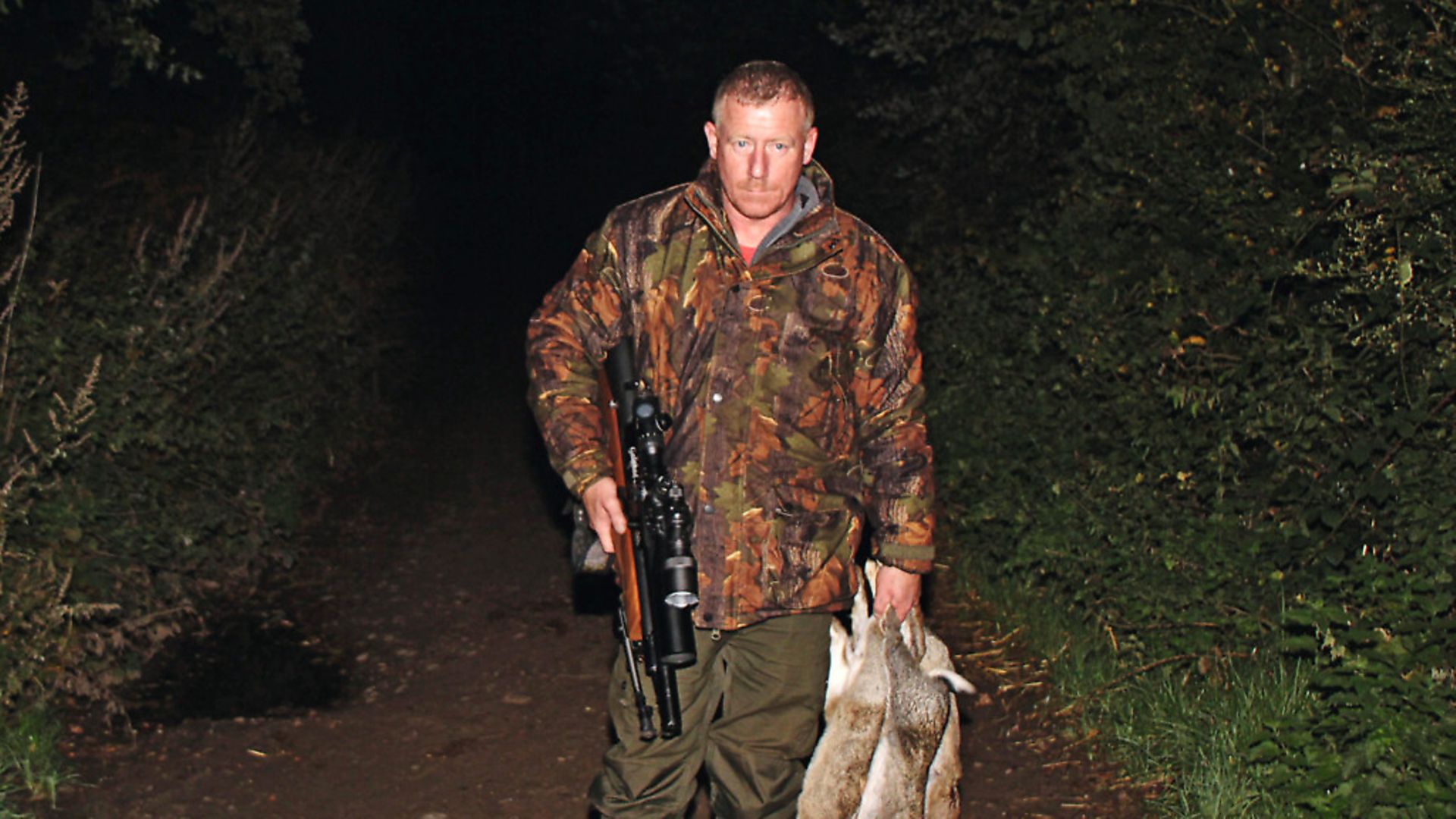Eddie Jones shares some hard-won technique, and tips on lamping rabbits
 credit: Archant
credit: Archant
For the last few months, we have seen quite a lot of kit that I have been using to help gain an advantage over my quarry. Although some of it is expensive, there is plenty of bargain kit to be had and it will do just as good a job. When you shoot at night, nothing will beat night-vision equipment. Most of the rabbits have no clue that we are there, and the ones that do still have little chance if they think squatting in the grass will save them. Not everyone can afford such luxuries as the Pulsar and Yukon dedicated units, but the add-on that Sniperscope supplied was a great unit for the price, and it did a great job. This month, I am going right back to basics, and no, I don’t mean a 6-volt acid battery leaking all over my jacket and a hand-held lamp. These days we have a lot of powerful torches on the market for not a lot of money, and we get different coloured pills for the them, so you could have one torch that can be changed to a different colour in minutes, without losing power and trying to get through the filters of old.
One tidy package
Although modern lamps still use filters for the bigger units, we often use equipment that is all built into one tidy package. Over the last few years, I’ve used anything from a T20 torch, right up to a T67, Led Lenser torches too, but anything in between these sizes is perfect for rabbiting at night. Most new torches have different power settings as standard, also we have the small touch pad that we can stick to our stocks to switch on the torch. These are great for use when within range of the rabbit because you don’t get the click of the switch usually associated with the back button on the torch. It is surprising how many rabbits are lost due to the sound of a noisy switch spooking them.
Tonight I am using a torch that I have had for a good 12 months now. I do a lot of night-vision shooting so I needed a powerful IR (infrared) torch, but I also wanted one that I could use normally. The Deben F900 torch offered me just that. When I was asked to field test it, I jumped at the chance, not only because I was getting it on a long-term loan, but also because I could get the torch in a kit with a red, white, blue and a green pill together. This was just the thing I was after, and you also get mounts for 1inch and 30mm scopes, so fitting it is not an issue.
What I really liked about this torch was the ability to turn down the brightness of the beam via an incorporated dimmer switch. This made it so versatile that I could also use it for ratting sessions when a less powerful light is needed. The only drawback that I found was the price, but when you look at what you are getting for the money and add it up, it is not that expensive after all.
 credit: Archant
credit: Archant
I use this torch for every type of night shooting I do now and have since I bought another as a back-up. So there it is, my last bit of kit for my night shooting.
How I used the kit
The first session was with the Yukon and Pulsar dedicated units. When using this kit it gives you the option of lying in wait for the rabbits coming out to feed, or walking around and shooting the rifle as you would a day scope. The only drawback when using this kit is the necessity to use a night-vision or thermal spotter. There is no point in shining a lamp at the rabbit to locate it because this just defeats the object of night-vision. That’s when things become expensive, but you will not beat the effiency of this method for controlling rabbits.
Next was the add-on kit from Sniperscope. This can be used the same way, but it does become very arm-heavy if you’re walking toward a rabbit whilst looking through the screen. It is better to wait in certain places for rabbits to come to you, to make it efficient and comfortable. If you do want to walk around with it, then definitely take some shooting sticks.
 credit: Archant
credit: Archant
Torchlight
Finally, the torch; this is my firm favourite way of shooting rabbits if I go for just a walk around permission without having to do a job on the numbers. There is nothing more satisfying than getting between a rabbit and its warren and making it squat so you can get close enough for a shot. I have been asked so many times how I get close enough with a torch because when most people go out, rabbits have run off before they’ve got close enough.
The way I do it is probably not the way everyone gets results, but I have lamped this way for years and it’s worked nearly all the time – unless I miss one, and then I’ll very rarely get it to sit again because it knows what’s coming.
First rule before any lamping session is to know your ground; you need to know where the warrens are because the rabbits will be out in the fields in front of them. Identify any obstacles – when night-time comes these obstacles are accidents waiting to happen. Try to go on a moonless night with a bit of wind because this will help you to remain undetected, and when walking toward the rabbit, the wind will hide any noise from you.
 credit: Archant
credit: Archant
When you start off in search of your rabbit, only shine out into the field. Don’t be tempted to have a look up the fence line because the rabbits close to the fence will only run off. I scan out into the field and slightly in the direction of where my next scan is going to be. If I see any eye shine just in front, I will keep the torch on it, but try to get in line with it before heading out into the field.
Use the beam
When you spot your rabbit out in the field, it will either run as soon as the light hits it, or it will crouch down and try to hide. With luck, the latter will happen because you are stopping it from getting to its warren. If it squats, do not turn the torch off and try to get closer; the beam is what is making it squat, so keep it on it. When I am walking toward the rabbit I take steady, slow paces and try to keep the main beam just in front of it. My theory is that it does not want to go into the brightest part of the beam, so it should sit tight. On occasions, the rabbit will turn away from the beam, but just get the beam back in front of it and it should squat back down. When you think you are in range, gently raise the rifle to your shoulder and only when you are ready to shoot will you put the main beam back on. I have found that most times a rabbit will not run. If you are close enough to shoot it, then it has committed itself to thinking that it cannot be seen.
Take your time now because your adrenalin will be in overdrive. You have watched that rabbit all the way into the field; you have outwitted it, and now you are about to put all that hard work down to the pull of the trigger.
If you have got your shot off and hit true, head back to the fence line and start off again. In time, you will decide what works best for you – nothing is set in stone and every session will throw up surprises and pitfalls. If things are not going to plan, do not give up. The more you try, the better it will get.
See some more tips here...
5 top hunting tips
Advice on tactics and equipment needed to start hunting at night